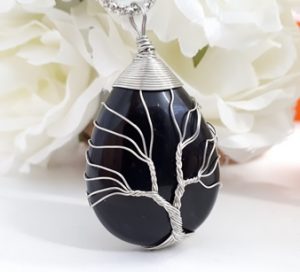
Creating Your Sanctuary: Integrating Feng Shui into Your Home Decor
In today’s fast-paced world, creating a home sanctuary where you can relax, rejuvenate, and connect with yourself is essential for maintaining your mental and emotional well-being. Integrating Feng Shui—a centuries-old Chinese philosophy that harmonizes your living space with the natural environment—into your home decor can transform your space into a serene retreat. Here’s how to create your sanctuary while incorporating Feng Shui principles into your home.
Understanding Feng Shui: The Basics
Feng Shui emphasizes the flow of energy (or "Chi") in your environment. According to this philosophy, the arrangement of furniture, color schemes, and decor can influence your mood, energy levels, and even luck. The five elements—wood, fire, earth, metal, and water—play a crucial role in Feng Shui principles, as each element brings its unique energy into your space.
Step 1: Declutter Your Space
The first step to achieving a Feng Shui sanctuary is decluttering your home. Clutter obstructs the flow of Chi, leading to stagnation and stress. Start by:
- Assessing Each Room: Go through each room systematically, identifying items that no longer serve a purpose.
- Creating a Declutter Schedule: Allocate dedicated time to declutter various areas in your home, and consider employing the "one in, one out" rule to maintain balance.
- Organizing Thoughtfully: Once decluttered, organize items into storage that feels intentional and purposeful, promoting a peaceful and orderly environment.
Step 2: Optimize Your Furniture Layout
Furniture arrangement significantly impacts the flow of energy in your home. Follow these tips to create a harmonious layout:
- Command Position: Place your bed, desk, and main seating area in a "command position," where you can see the entrance while remaining in a position of safety and control.
- Avoid Blocking Pathways: Make sure that pathways are clear and unobstructed, allowing energy to flow easily throughout your space.
- Use Soft Edges: Select furniture with rounded edges to promote a calming atmosphere instead of sharp lines that can be overly stimulating.
Step 3: Incorporate Colors Wisely
Colors can evoke various emotions and influence the overall energy of your space:
- Earth Tones for Comfort: To create a cozy sanctuary, use earth tones such as soft browns, creams, and terracotta. These colors foster feelings of stability and reassurance.
- Nature’s Hues: Incorporate greens and blues, representing growth and calmness, to enhance your connection with nature.
- Accent Colors for Energy: Consider adding pops of vibrant hues such as red or orange in small accessories to energize your space without feeling overwhelming.
Step 4: Introduce the Five Elements
Integrating the five elements of Feng Shui in your decor enhances balance:
- Wood: Represent creativity and vitality by adding plants, wooden furniture, or decorative art.
- Fire: Incorporate candles, warm lighting, and red or orange decor to spark energy.
- Earth: Use clay pots or stone materials for grounding and stability.
- Metal: Include metallic finishes in your decor through mirrors or artwork to promote clarity and precision.
- Water: Add water features—such as a fountain—or decor elements with blue tones to encourage flow and abundance.
Step 5: Connect with Nature
Emphasize the importance of nature within your sanctuary. Bring the outdoors in through:
- Indoor Plants: Choose air-purifying plants like peace lilies or snake plants to enhance your indoor environment and bring in growth.
- Natural Light: Maximize natural light by utilizing sheer curtains and strategically placing mirrors to reflect light throughout your space.
- Earthy Textures: Incorporate natural fibers in textiles, such as cotton, jute, or linen, to create an organic, peaceful atmosphere.
Creating A Daily Ritual
Creating a sanctuary is not just about design; it’s also about your mindset. Incorporate daily habits to enhance your Feng Shui sanctuary:
- Mindful Moments: Dedicate a specific time each day for meditation, journaling, or simply sitting in quiet reflection.
- Aromatherapy: Use essential oils or incense to create calming scents throughout your home.
- Gratitude Display: Create an area for gratitude notes or affirmations to uplift your spirit daily.
Frequently Asked Questions (FAQ)
Where can I find Feng Shui accessories for my home?
- Home Decor Stores: Many local home decor stores carry a variety of Feng Shui-inspired decor items.
- Online Retailers: Websites like Amazon, Wayfair, or Etsy have a wide selection of Feng Shui accessories, from crystals to bamboo plants.
- Specialty Shops: Look for local shops selling holistic or international goods; they often stock unique, authentic items.
- Craft Stores: Consider visiting craft stores for materials like natural fibers and paints to create your own personalized decor that resonates with your space.
By following these steps and principles, you can seamlessly integrate Feng Shui into your home, creating a tranquil sanctuary that nourishes your well-being and encourages a harmonious flow of energy. Remember, it’s not just about aesthetics; it’s about cultivating a space where you can truly feel at peace. Happy decorating!







